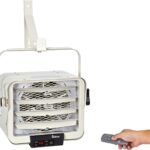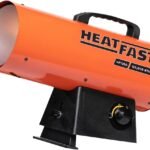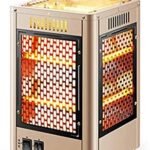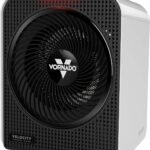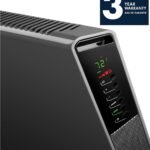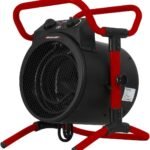In “How To Maintain A Tankless Water Heater”, you’ll start a journey into the world of home appliance maintenance, focusing specifically on your tankless water heater. This guide will highlight the key steps to keeping it functional and efficient. You’ll discover easy-to-follow procedures, handy tips, and time-tested wisdom distilled into one comprehensive, easy-to-understand source. By the end, you’ll have mastered the art of maintaining a tankless water heater, ensuring a steady supply of hot water for your home while making the most of your investment.
Understanding Your Tankless Water Heater
It’s essential to grasp the underlying concept of your tankless water heater to perform successful maintenance. A tankless water heater is often referred to as a demand-type or instantaneous water heater, it provides hot water only when it’s required.
Key components of a tankless water heater
The functionality of a tankless water heater revolves around a few critical components – the heat exchanger, sensors, a modulating gas valve, and an electronic control panel. The heat exchanger is a noteworthy part, transferring heat from a heating source to your water.
How a tankless water heater works
When you turn on a hot water tap, cold water travels through a pipe into the unit. The sensor picks up the flow, triggering the gas burner to ignite and heat up the heat exchanger. The heat then transfers to the water, providing you with instant hot water.
Benefits and challenges of tankless water heaters
Tankless water heaters have numerous advantages; they’re energy efficient, saving you money in the long run, and they provide continuous hot water on demand. However, they may require a significant upfront cost, and their output limits could mean that supplying simultaneous hot water to multiple appliances might be challenging.
Necessary Tools For Maintenance
Maintaining a tankless water heater may require a set of particular tools for the best results.
List of necessary tools
There are some tools that you could use, including a non-contact voltage tester, tongue and groove pliers, adjustable wrench, bucket, and hose. You may also need a submersible pump and white vinegar for flushing the system.
Where to buy these tools
These tools can typically be found at your local hardware or home improvement store. They may also be available for purchase online.
Alternative tools if main ones aren’t available
If you can’t find these specific tools, alternative tools could work. For example, if you can’t find tongue and groove pliers, a pipe wrench could be an alternative.
Frequency of Maintenance for Tankless Water Heaters
maintaining the optimal operation of your tankless water heater involves regular maintenance.
Recommendations on maintenance frequency
It’s recommended to conduct maintenance on your tankless water heater at least once annually. Regular maintenance ensures your unit operates efficiently and at peak performance.
Signs your heater may need maintenance
Some signs that your heater needs maintenance include fluctuations in water temperature, lower water pressure, or an unexpected increase in energy bills.
Factors affecting maintenance frequency
The frequency of maintenance can depend on factors such as water hardness, the frequency of usage, and the type of model you own.
Steps to Flush a Tankless Water Heater
Flushing your tankless water heater periodically is a crucial part of maintenance.
When to flush a tankless water heater
It’s advisable to flush your tankless water heater at least once a year. However, if you have hard water, you might need to do it more often.
How to properly flush a tankless water heater
Properly flushing a tankless water heater involves shutting off the water and power supply, attaching a hose to the purge valves, and using 2.5 gallons of white vinegar to flush the system for at least 45 minutes.
Studies about flushing tankless water heaters
Studies confirm regular flushing of tankless water heaters can enhance their efficiency, lifespan, and performance.
Inspecting the Venting System
The venting system plays a vital role in the overall function of your tankless water heater.
The importance of inspecting the venting system
It is critical to ensure your venting system is correctly fitted and free of any blockages. A wrongly installed or blocked venting system can lead to incomplete combustion and overheating, triggering a shutdown of your unit.
Step-by-step venting system inspection
Inspecting the venting system involves checking for damages on the vent, ensuring it’s not blocked, and performing a professional inspection whenever necessary.
Fixing issues with the venting system
If there are any issues found during the inspection, such as blockages or damages, a professional should be contacted for repair or replacement.
Water Heater’s Filter Cleaning
Filters play a crucial role in the operation of tankless water heaters, ensuring smooth and uninterrupted service. Thus, their cleaning and maintenance should not be overlooked.
The importance of clean filters
Clean filters are essential to ensure optimal functionality. They aid in protecting your unit by filtering out any large particles and contaminants that could potentially cause harm to your water heater.
Methods of optimally cleaning your filters
The filters can be cleaned by removing them from the unit, rinsing with warm water, and using a soft brush to scrub off any remaining deposits.
How often should you clean the filters
The cleaning frequency can depend on the quality of your incoming water, but generally, filters should be cleaned every six months.
Temperature and Pressure Relief Valve Testing
TPR valves serve as safety features on your tankless water heater.
What is a TPR valve
A Temperature Pressure Relief (TPR) valve is designed to release water if the pressure or temperature in your tank exceeds safe limits.
How to test a TPR valve
Testing a TPR valve involves lifting the valve for a few seconds and then letting it snap back. The valve should allow water to be released and then stop releasing once the lever has been released. If the valve keeps releasing water or doesn’t release any at all, it might need replacement.
How often to test your TPR valve
For the safety of your water heating system, testing the TPR valve every six months is recommended.
Preventing Legionella Bacteria
As a water heater owner, it’s crucial to understand the potential risk of Legionella bacteria in your system.
What is Legionella bacteria
Legionella is a type of bacteria that flourishes in warm water and can cause a severe form of pneumonia known as Legionnaires’ disease.
How it can affect your water heater
Legionella can inhabit your water heater if the water is not heated to a high enough temperature.
Steps to prevent Legionella bacteria in your heater
Maintain a minimum temperature of 60°C in your water heater, flush your tankless water heater periodically, and consider using copper or silver ionization units to prevent Legionella bacteria.
Professional vs DIY Maintenance
Deciding between DIY or professional maintenance used to rely on a few critical factors.
Pros and Cons of DIY maintenance
Doing maintenance on your own can save you money and provide knowledge about your unit. However, without expert knowledge, you might miss some critical issues or damage your equipment.
When to consider professional help
Consider professional help if you’re not comfortable doing maintenance yourself, if you detect gas leaks, if there’s an electrical issue, or if the problem persists after your efforts to fix it.
Cost comparison of DIY vs professional maintenance
While DIY maintenance saves the expense of hiring a professional, if not performed correctly, it could lead to severe and costly damage, making professional maintenance a more cost-effective choice in some cases.
Additional Maintenance Tips
Proper maintenance can significantly extend the lifespan and efficiency of your tankless water heater.
Energy saving tips
Ensure your unit is correctly set up, periodically inspect and clean your system, and consider installing a water softener if you have hard water.
Longevity tips for your water heater
Regular maintenance, preventing scale buildup, and ensuring the correct setup can significantly increase the lifespan of your unit.
Common troubleshooting tips
If you’re having trouble with your unit, ensure the power supply is on, clean any clogged filters, and reset your system. Always consult the owner’s manual or professional help if the problem persists.

